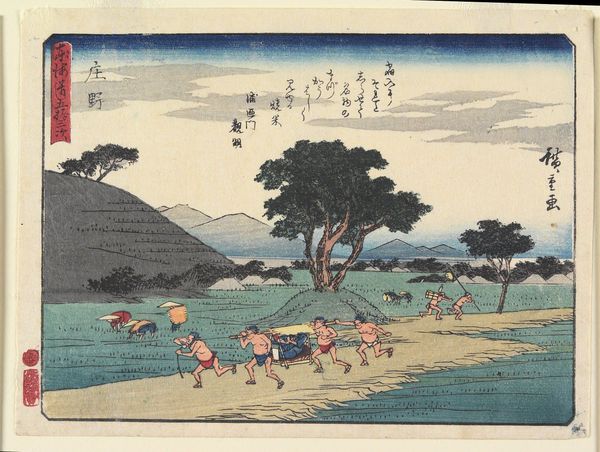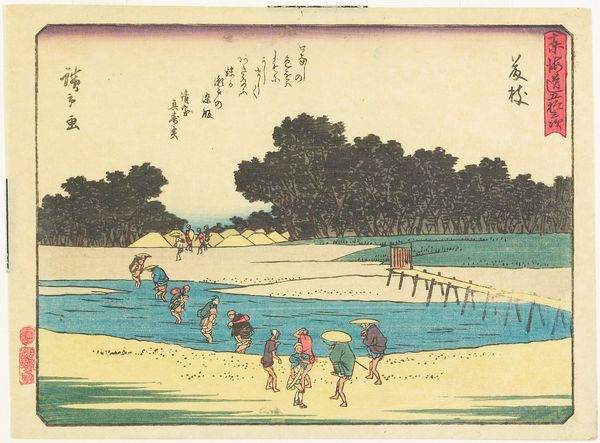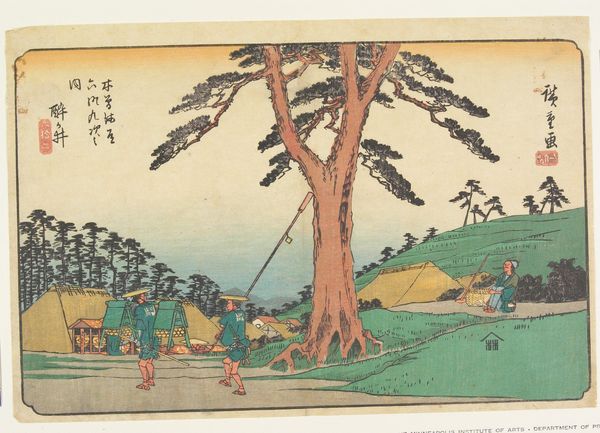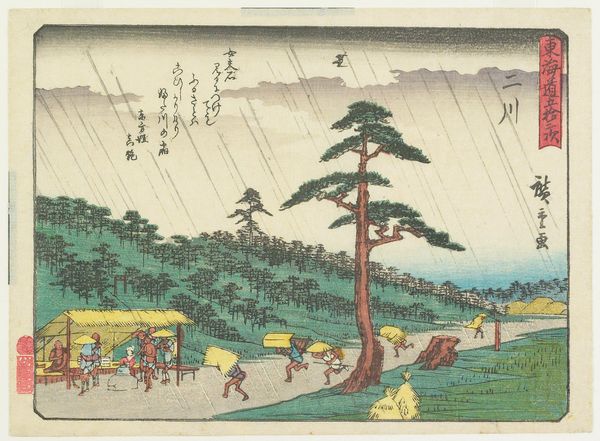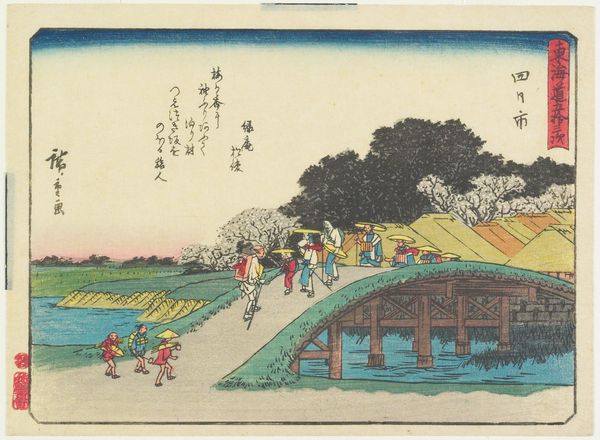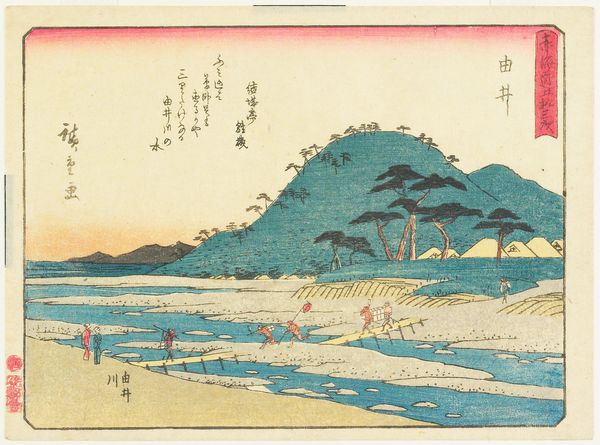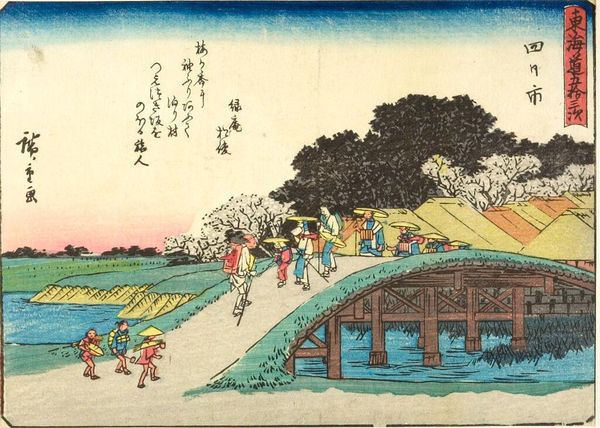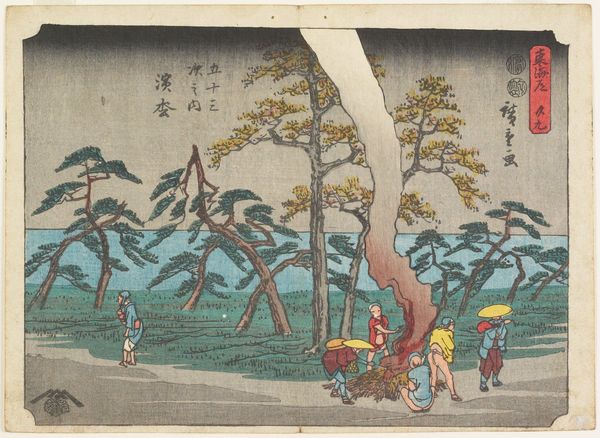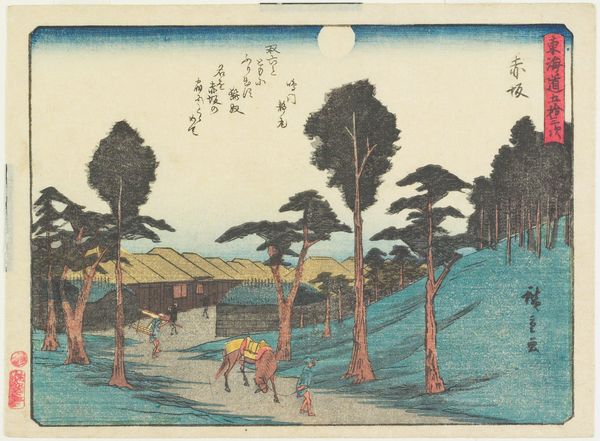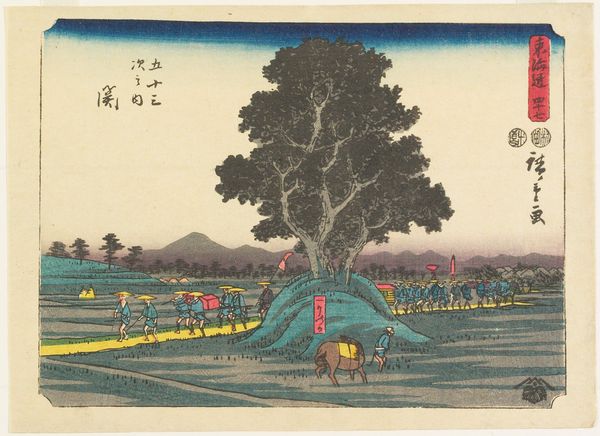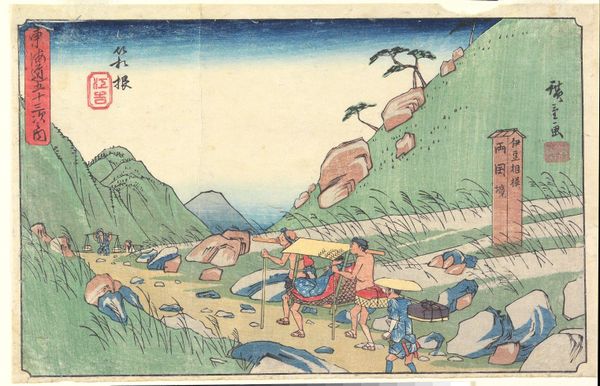
Dimensions: 6 x 8 1/4 in. (15.2 x 21 cm) (image)6 1/2 x 8 15/16 in. (16.5 x 22.7 cm) (sheet)14 x 17 15/16 in. (35.5 x 45.5 cm) (mat)
Copyright: Public Domain
Curator: Here we have "Shōno," a woodblock print by Utagawa Hiroshige, created around 1840 to 1842. It’s part of the “Fifty-three Stations of the Tōkaidō” series. What are your initial thoughts? Editor: It’s striking! There's a palpable sense of urgency, of being swept along in a moment. The runners carrying the passenger are compelling. I find the limited palette contributes to a rather somber and hectic tone. Curator: Let's think about the means of production. The materiality of this work, its woodblock construction using ink, demanded skillful labor. Different artisans would be responsible for carving, printing, and registration, indicating division of labor. What kind of lives did these craftsmen have, and how does it impact the print we see now? Editor: Exactly! This wasn’t a solitary pursuit but a collective endeavor of labor. Moreover, the subjects shown are couriers performing their physical duties. What kind of societal structure makes these people have to move so urgently? What socio-economic needs dictated such labor-intensive transport? Curator: The Tōkaidō road was essential to trade and travel. Hiroshige often depicted the lives of ordinary people alongside the landscapes. He showed the realities of that historical moment by blending aesthetic ideals with daily functions. What does this juxtaposition show us about the artistic choices of that time? Editor: I think he shows both the beauty and the burdens of this system of transport. It makes me reflect on the societal constraints surrounding the working classes who didn't always have control of their labor and bodies. Who benefitted the most? Curator: Woodblock prints were more accessible than paintings, so it's interesting to examine them in terms of consumption too. What statements are being made about who it was meant to be seen by when made with accessible materials? Editor: Very true. And while aesthetically captivating, let’s not lose sight of the implied narratives woven into this woodblock. Consider this a lens to reflect on historical and present struggles involving power, and accessibility that extends beyond purely economic accessibility. Curator: This certainly underscores the layered meanings found within, reflecting the cultural values and the circulation of images during the Edo period. Thanks for bringing this to our attention. Editor: Absolutely, an urgent reflection to remember!
Comments
No comments
Be the first to comment and join the conversation on the ultimate creative platform.
